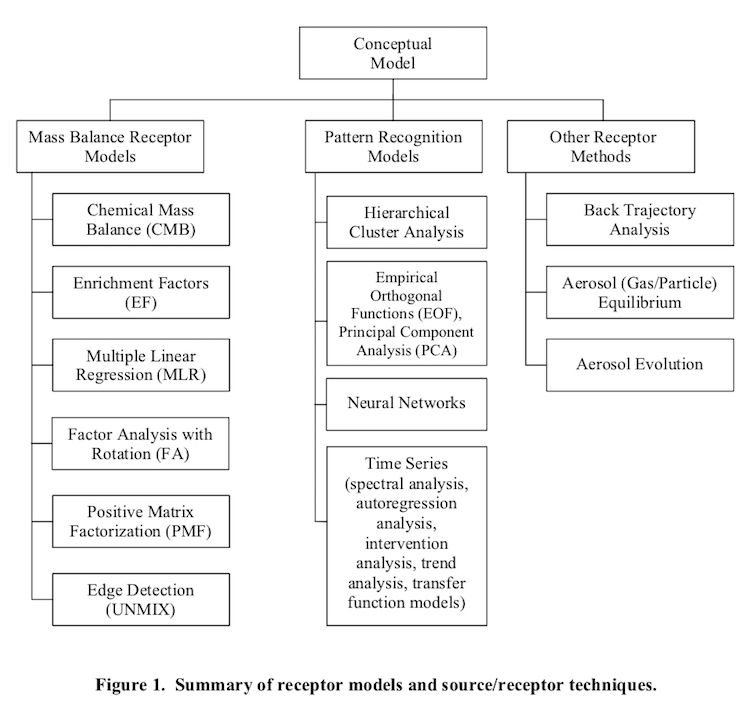Statistical Modeling - Receptor Models Advanced

Reading Guide
Receptor models are mathematical or statistical procedures for identifying and quantifying the sources of air pollutants at a receptor location. Unlike photochemical and dispersion air quality models, receptor models do not use pollutant emissions, meteorological data and chemical transformation mechanisms to estimate the contribution of sources to receptor concentrations.
Receptor models use the chemical and physical characteristics of gases and particles measured at source and receptor to both identify the presence of and to quantify source contributions to receptor concentrations. Receptor models complement source models by independently identifying sources and quantifying their contributions using ambient measurements of different observables at different times and locations. Source apportionment is accomplished by solution of the mass balance equations that express concentrations of several measured pollutants as a linear sum of products of pollutant abundances in source emissions and source contributions.
The US EPA suggests the use of the following models:
A summary chapter (Watson and Chow, 2005) from the book Air Quality Modeling - Theories, Methodologies, Computational Methods, and Available Databases and Software, Vol II (Zannetti, Ed. 2005) is included as a pdf file.
Material
Guide prepared by P. Zannetti (9/2020). For corrections or expansions please contact us.